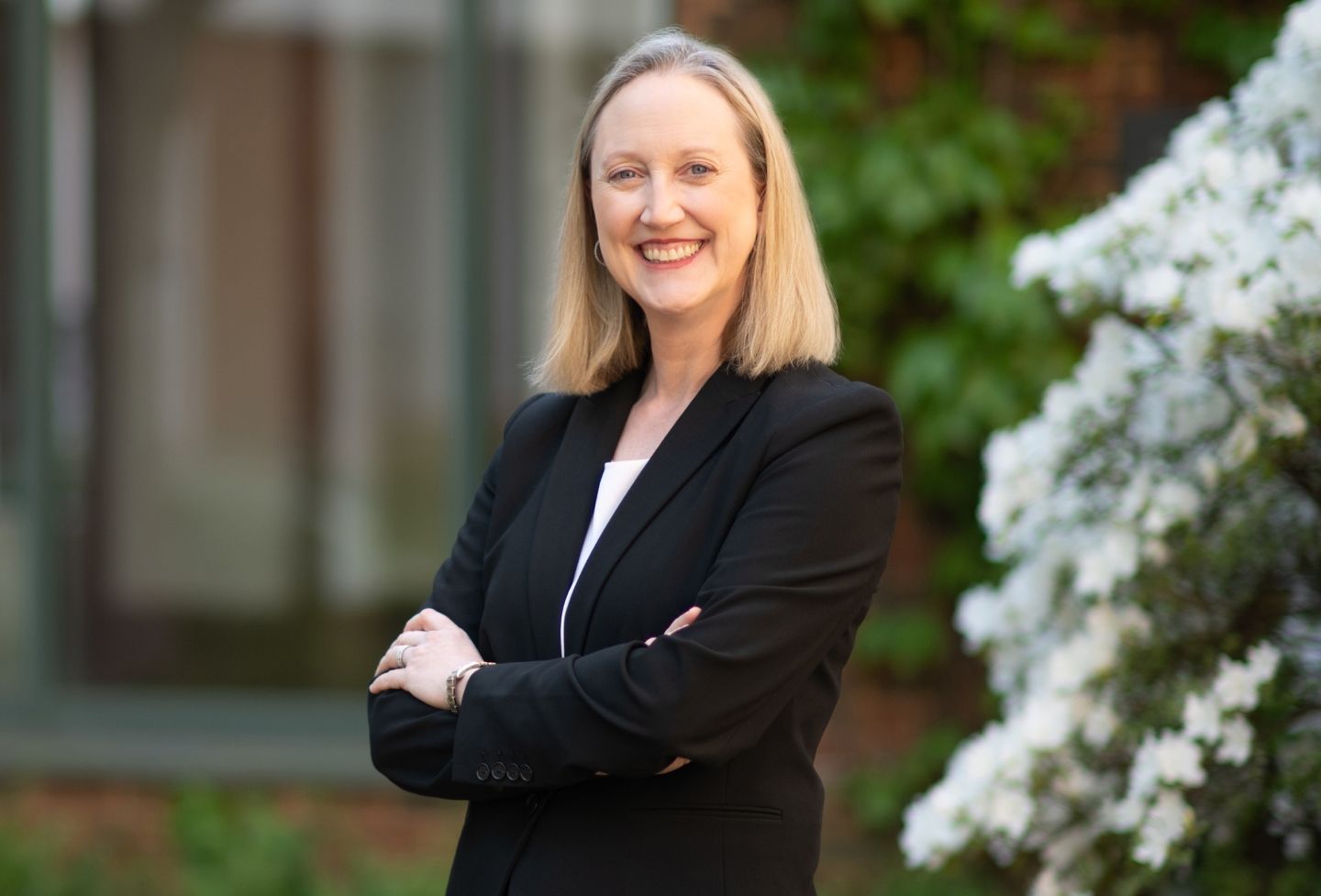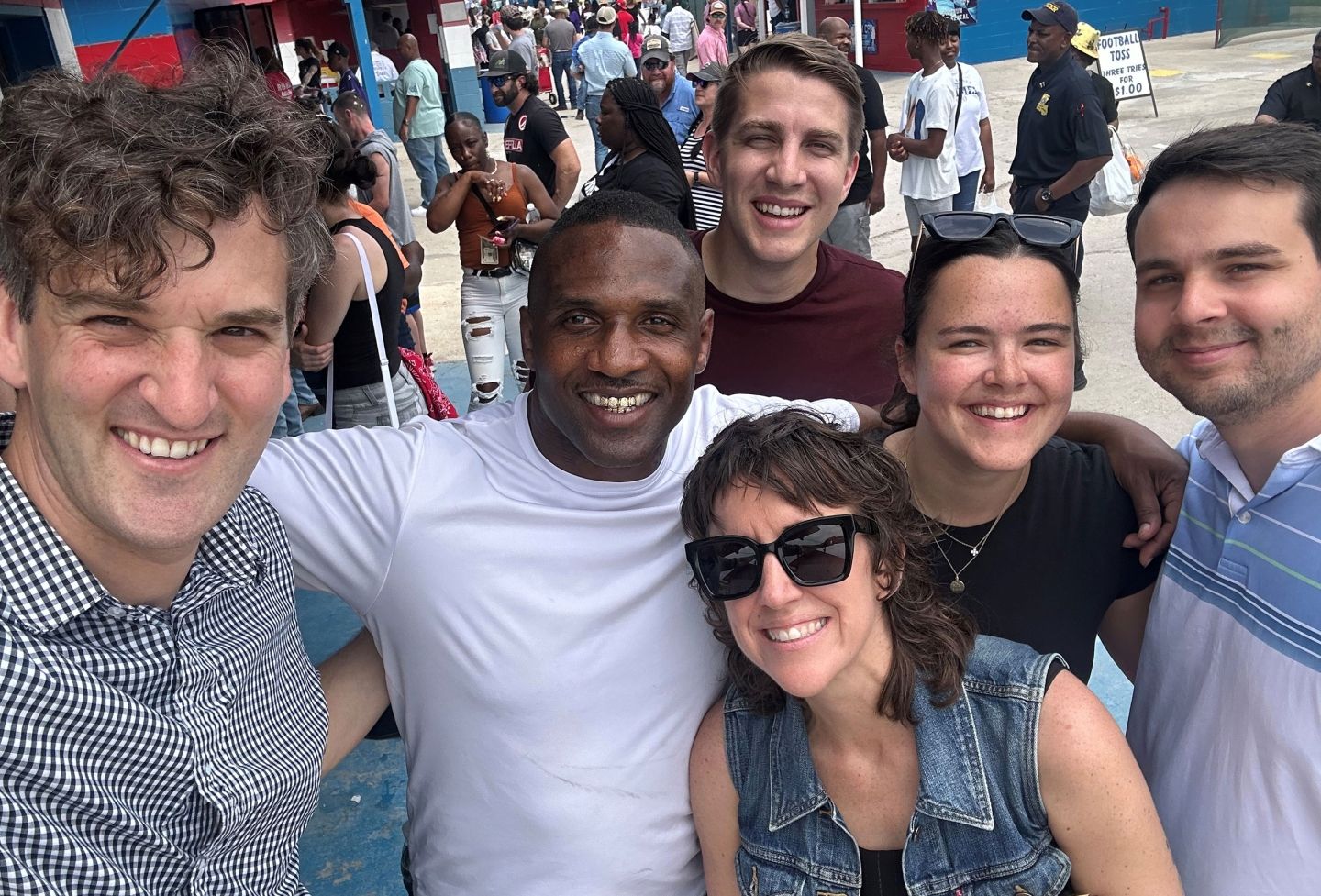Affirmative Action Arguments Debated at Public Service Conference

Two weeks before they meet at the U.S. Supreme Court for a fateful showdown on affirmative action admissions policies at the nation's public universities, the opposing sides in Grutter v. Bollinger held a pretrial scrimmage at the Law School March 15 as the main event of the 4th annual Conference on Public Service and the Law.
The panel brought together Jonathan Alger, Assistant General Counsel for the University of Michigan (the defendant in the case brought by Barbara Grutter, an unsuccessful applicant to the U-M Law School in 1997); Stanford University law professor Richard Banks; Curt Levey, director of legal and public affairs for the Center for Individual Rights (which is representing Grutter); Roger Pilon, director of the Cato Institute's Center for Constitutional Studies; and Peter J. Rubin, associate professor of law at Georgetown University Law Center.
America's goals of transcending race and lessening racial disparities presents conflict between two actions, according to Banks. Transcending race requires ignoring it, but eliminating disparities means paying it close attention. "It is not clear how to translate these goals into constitutional doctrine," he said.
Affirmative action policies are "directed toward the problem of the color line," Banks added. "They are not simply about past inequalities. Those inequalities continue to make themselves felt in our daily lives."
In a prologue to the panel discussion, Law School Dean John C. Jeffries Jr., author of a biography of Justice Lewis Powell, whose opinion in the 1978 Bakke case is the foundation for current college affirmative action policies, noted that the argument over affirmative action is very nearly the same as it was 25 years ago. "This is a remarkably durable dispute. The fault lines have remained stable." Aside from abortion, the affirmative action dispute is unique in this regard, he said. "People in 1978 thought affirmative action programs would last 10 years and then would no longer be needed. Proponents were not candid.
"In 1978 there was talk about affirmative action stigmatizing black students. I do not believe that has been the case. These students have flourished here and we have uncommon pride in them. Our policy has been an unqualified success.
"Supreme Court Justice Lewis Powell took a step, maybe a half-step," Jeffries said, "toward a better world. It's my hope that the Supreme Court will allow us to continue down that road."
Jonathan Alger, assistant general counsel for the University of Michigan, said the case makes this a "historic time in higher education.
"We are fighting this battle as matter of principle. We really think diversity is good for all our students." He said "college is the gateway to opportunity," and further that it is important to "note how successful [the approach based on] Bakkehas been."
Alger offered answers to what he said were the central objections the Center for Individual Rights makes to Michigan's argument, namely that public institutions should be color-blind, that U-M is sacrificing the ideal of merit and that it is essentially using quotas for minority admissions.
Alger said, "Having the goals of color-blindness does not mean you have to ignore race. It does matter — as the Supreme Court said in Brown v. Board of Education — in education settings. Is bringing in blacks and Hispanics, is that stereotyping? No, seeing their commonalities breaks down stereotypes."
He said there is "no trade off" of affirmative action for merit-based admissions decisions. "It's not just a matter of grades and test scores. Students are chosen for what they can contribute to the education of their peers. When you look at the careers they go in to, our students of color are doing just as well as our majority students. All our students are qualified to get in. I teach higher education law at U-M and I have seen the benefits of diversity firsthand in my classroom."
As for the contention that U-M is essentially maintaining a quota for minority students, Alger said, "That's not how we operate. Everyone competes against the entire applicant pool. Race is just one of many plus factors. Every year we have some white students who are accepted who are less qualified than some black students who are rejected. Why? Because they have something special they bring to the class." (Michigan's undergraduate admissions decisions involve a 150-point scale in which different "plus" factors are awarded points. The son or daughter of an alumnus, a "legacy," is awarded 3 points. For essays judged outstanding, applicants are awarded 3 points.)
He said that percentage plans, which Texas now uses, in which the top X percent of a high school class is offered admission to a university, would not work for Michigan because 60 percent of their admissions are out-of-state students. As for using socio-economic considerations as proxy for race, Alger said, "We do, but it's not an adequate substitute for race." He also noted that the authors of the Texas percentage plan have submitted an amicus brief in support of the University of Michigan's position.
"Some moderate consideration of race" does not have a detrimental affect on an applicant's chances, he argued. "If race is not considered, a white applicant's chance of getting admitted goes from 25 percent to 26 percent, so [consideration of race] is not what's keeping those students from getting in."
Curt Levey responded first by saying he would use the term "racial preferences" about the issue rather than "affirmative action," because "that's what it is."
"At U-M, you get 20 points if you are black, Hispanic or Native American. If it weren't a racial preference, we wouldn't be here today. There is no constitutional prohibition against diversity. The policy difference is over whether preferences get you to a color-blind society faster or not."
"The real story here," Levey contended, "is the education disease — the test score discrepancy between blacks and whites — that creates the need for the preferences. I would say that any treatment for a disease that leaves the disease unchanged is not an effective treatment."
Levey said that U-M relies too heavily for its diversity defense on Justice Powell's Bakke opinion, in which he said consideration of race could be one of many factors, when the four justices joining him in the vote don't express this opinion as a common denominator. This interpretive ambiguity is further borne out by the fact that two federal circuit courts have ruled against higher education affirmative action policies, he said. The results in the affected states, Texas and Florida, are "a hell of a lot better than what people predicted they would be if preferences are eliminated," he contended.
According to Levey, Michigan also "has trouble" on "narrow tailoring," or defining a policy so that its impact is strictly targeted and not broad and diffuse. "U-M is not looking for a 'critical mass' of Muslims or Mormons or people from the South or political conservatives. U-M has not tried race-neutral admissions. If a critical mass is not a goal then what is it? Is 5 percent a critical mass? Is 10 percent? 'Well,' they say, 'just barely.' For the last four years the minority enrollment has been between 13.5 and 13.7 percent," implying that such consistency is the outcome a quota would produce.
"They want to pretend that there are no victims of racial preferences," Levey continued. "They think that because blacks were discriminated against in the past, it is now fair to discriminate against whites and Asians. All that's changed is the fashion of who it's fair to discriminate against."
Peter Rubin, a former counsel to Vice President Al Gore in the Florida vote-counting cases of 2000, contended that without affirmative action "we would have essentially all-white classes at the elite law schools. After Hopwood [the Texas decision] came down, there were four African-American first-year students at the University of Texas Law School the next year.
"Color-blindness sounds nice but it would just freeze in place the conditions, the disparities, in society today that reflect the legacies of racism. The University of Virginia Law School does not take 'uncommon pride' in its blue- or green-eyed graduates because that's a distinction that has no salience in society. The narrowest tailoring is to use race as a factor," said Rubin, who also added that Clarence Thomas is a Supreme Court Justice because of affirmative action.
Roger Pilon observed that characterizations of affirmative action policies run the spectrum from benign to malignant, but disagreed that no one feels harmed by them. "I remind Mr. Alger that there are plaintiffs in this case. There are people who experience these policies as us versus them.
"As a government institution, the University of Michigan belongs to all the citizens of Michigan. Of the 150 possible points, 20 are automatic if you are of a preferred race… When you have a plan like Michigan's it comes close to being quotas."
Affirmative action policies pit the majoritarian principle of American democracy against its egalitarian principle, and in public institutions there are really no easy resolutions, he said. "The dirty little secret of public higher education is that it constitutes a massive wealth transfer from the lower classes to the upper classes. They pay taxes to support the kids from the higher-income families." Noting that the Supreme Court's decision will have implications for private colleges too, he said he saw no solution except to end public higher education and "have the government give vouchers to qualified students to attend the private universities of their choice."
Stanford law professor Richard Banks found both stances on affirmative action problematic. "We hear forward-looking arguments today about how things would be improved by the diversity outcome. But the classroom diversity argument is troublesome because it equates viewpoint with status," he said. On the plus side, "U-M's program diversifies not just the classroom, but the legal profession and the way we govern the nation. Lawyers are the way we run the justice system."
He called percentage plans intended to redistribute opportunities discriminatory because "If you don't have segregation, percentage plans don't work. They are preserving the status quo."
Both sides meet again April 1 at the U.S. Supreme Court.
Founded in 1819, the University of Virginia School of Law is the second-oldest continuously operating law school in the nation. Consistently ranked among the top law schools, Virginia is a world-renowned training ground for distinguished lawyers and public servants, instilling in them a commitment to leadership, integrity and community service.


